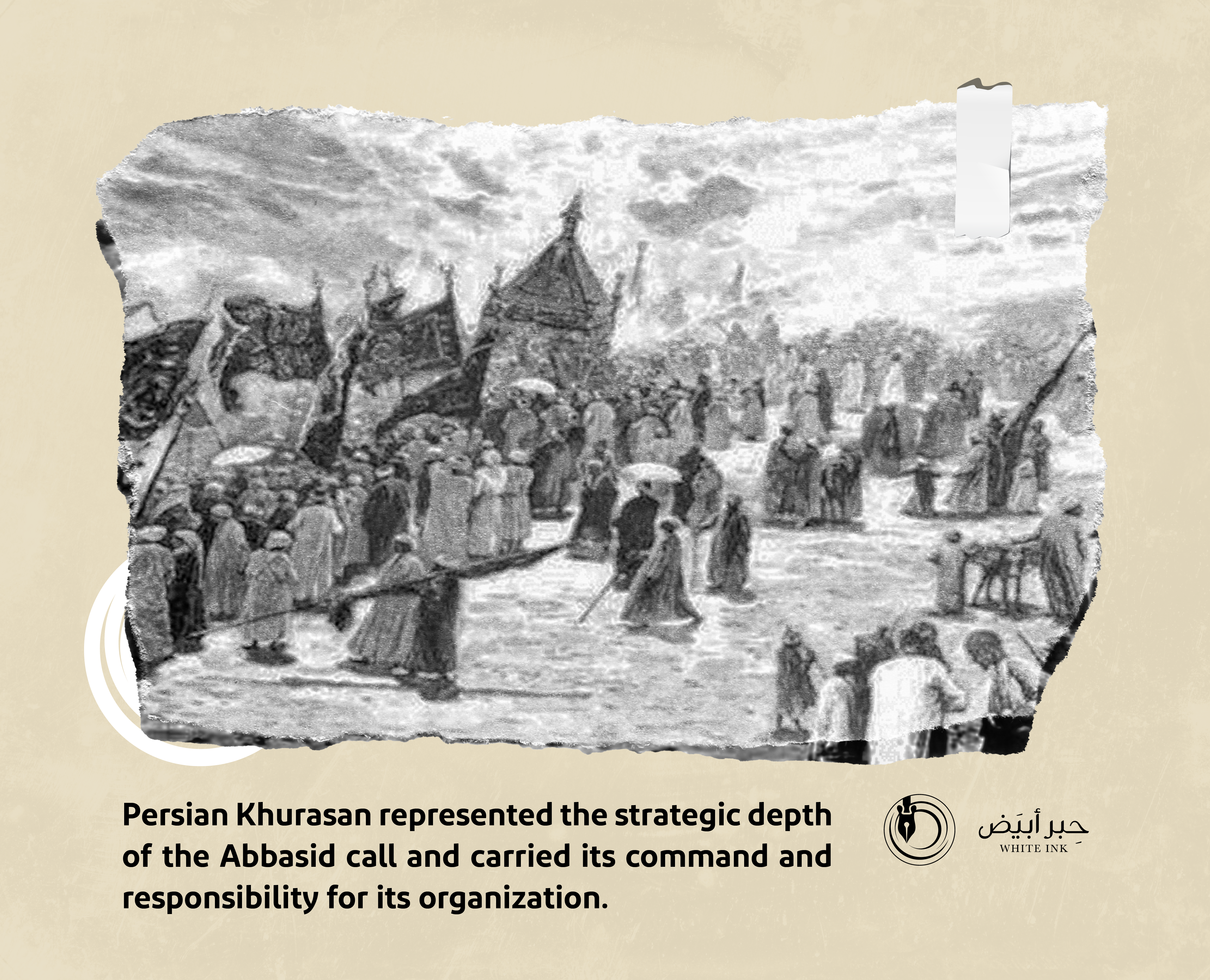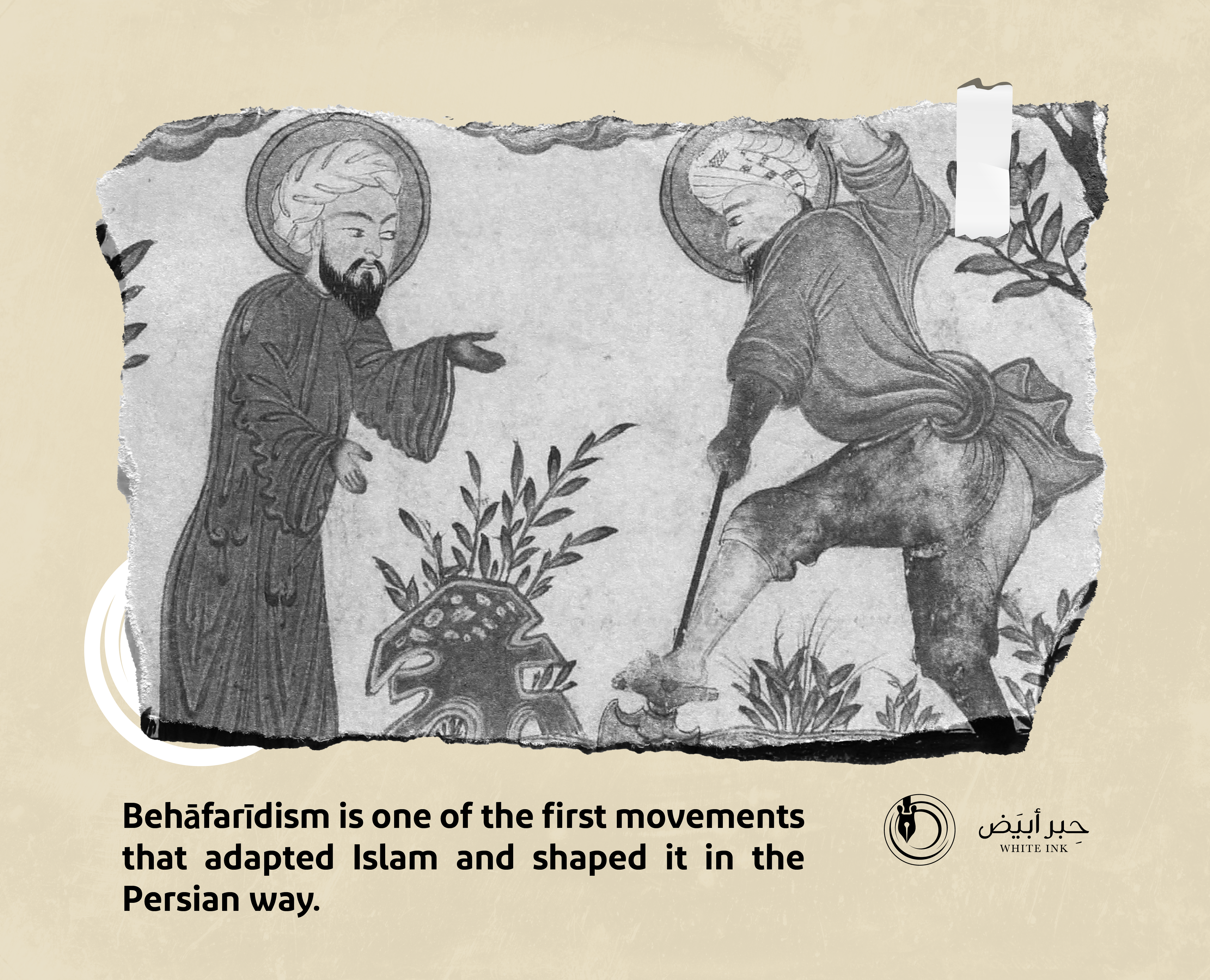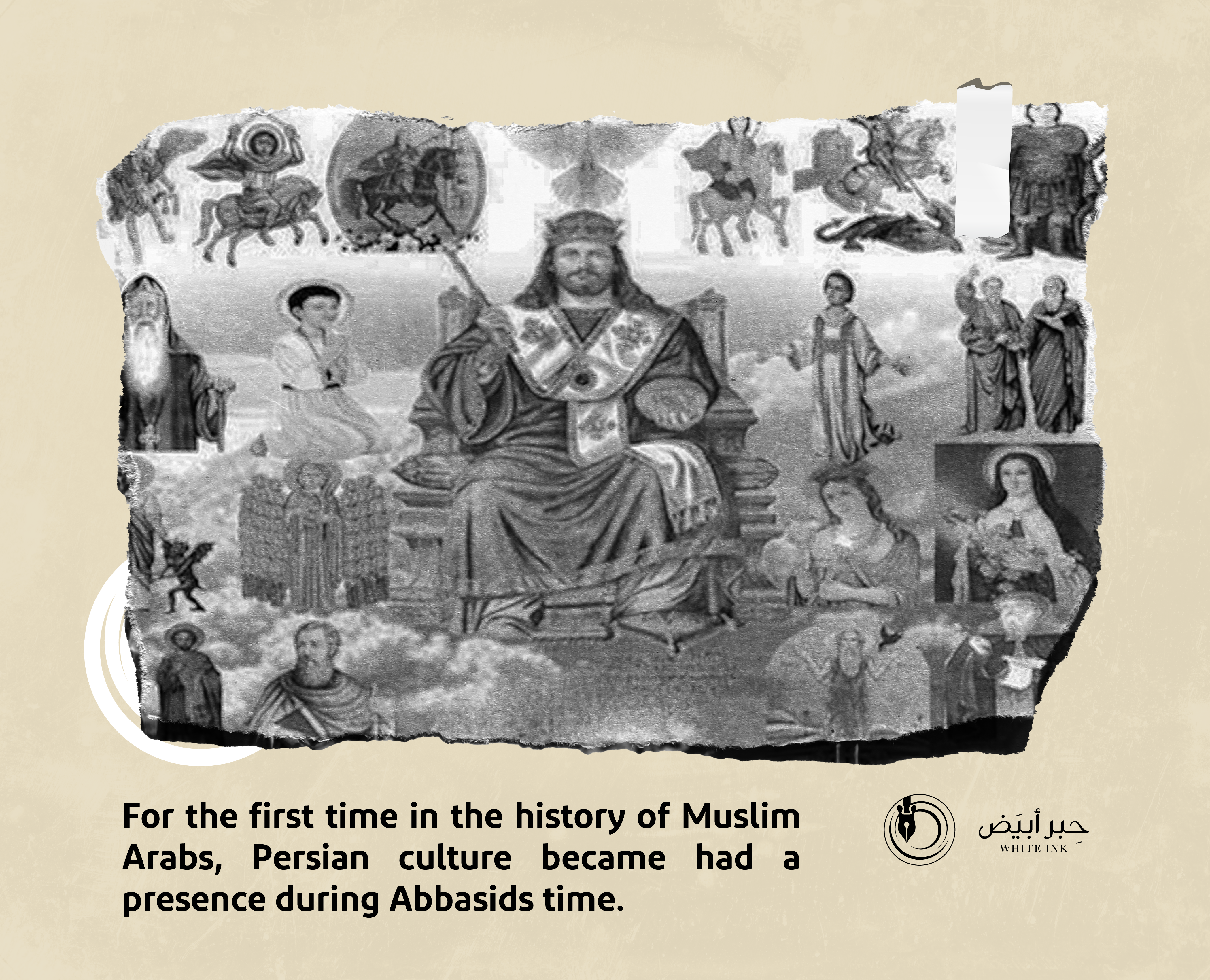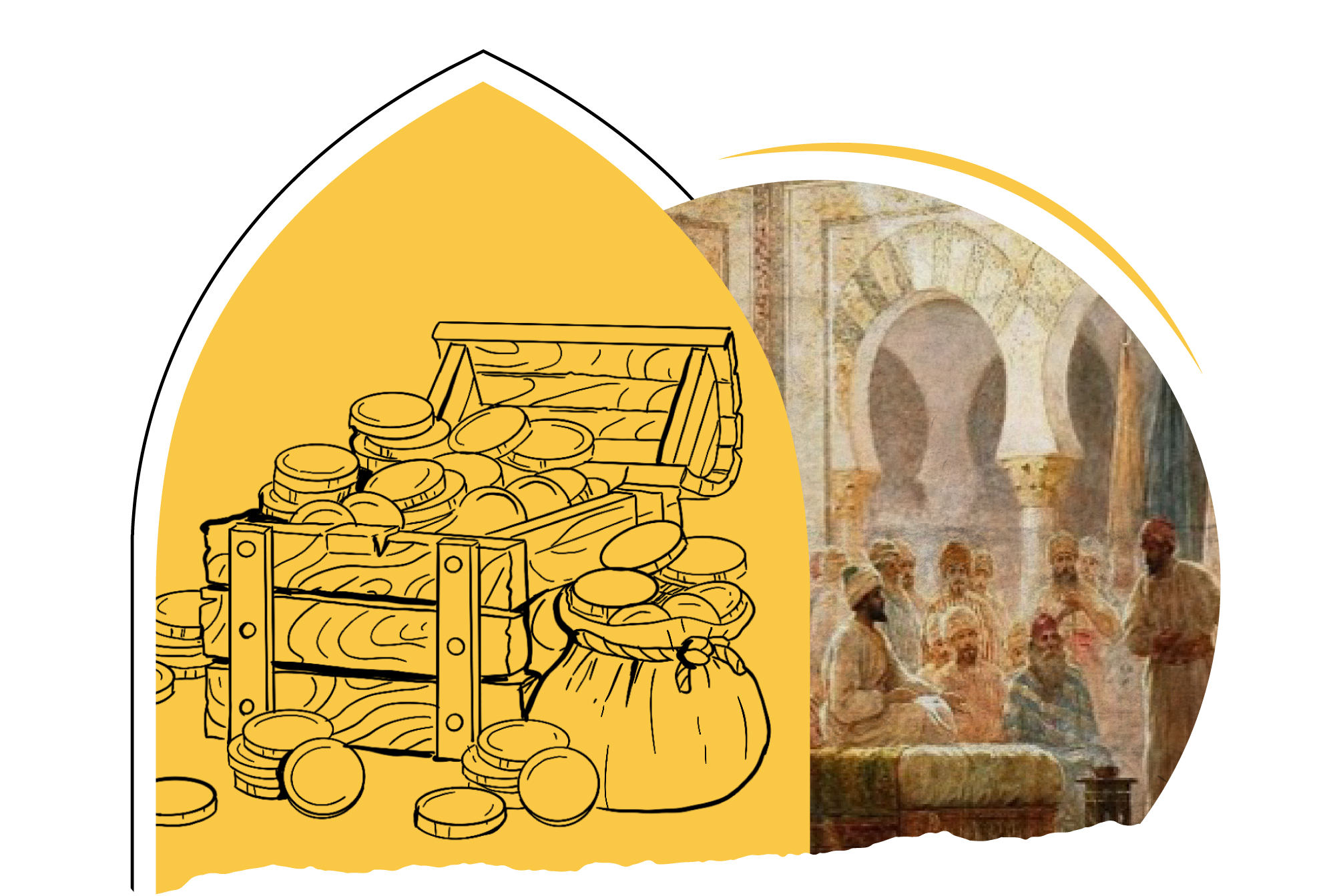
By Calling or the Abbasids Persians Created a Racist State for Themselves in the Arab State
The Abbasid call is one of the key transformations in Islamic history. This is definitely due to its success in overthrowing the first hereditary state in the history of Islam, which is the Umayyad state. This resulted in the establishment of the Abbasid state, which continued to rule for several centuries, despite several political changes that weakened it.
Nevertheless, what concerns us here is the Persian role in calling for the Abbasids, up to the Persians’ attempt to control the mechanisms of the call, so as to rule from behind the scenes after its success and the establishment of the Abbasid state, as well as the extent of its impact on the Arab element, which is the main component of the Abbasid state.
The Abbasid state is affiliated with Al-Abbas bin Abd al-Muttalib, the uncle of the Prophet (PBUH), who was dearly loved and revered by the Prophet, so did the caliphs thereafter. Al-Abbas died during the caliphate of Othman bin Affan and it was not known about him that he demanded the caliphate, nor did his sons, while the Alawites, the sons of Ali bin Abi Talib, demanded the caliphate as per their well-known story, since the caliphate of Ali bin Abi Talib and the incidents that took place with him and with his descendants after him.
The question here: If the Abbasid branch, since Al-Abbas, the uncle of the Prophet, did not claim the caliphate, then from where did this concept emerge, on which the ideological foundation of the Abbasid call relied?
The matter began with a narration that spread to a large extent, establishing the idea that claiming the caliphate moved from the Alawis to the Abbasids, on the basis that everyone is from Hashem family. Some promoted that Abu Hashem bin Muhammad bin Al-Hanafiya, on his death bed, recommended that the imamate be transferred after him to the Abbasids, specifically to Muhammad bin Ali bin Abdullah bin Al-Abbas. Accordingly, the call to the Hashem family became general and the Abbasids began their quest for the caliphate.
At its outset, the Abbasid call was characterized by secrecy for fear of confronting the Umayyads and eliminating the call. Therefore, they began with calling for the “hidden imam” so that the Umayyads would not know him. They also raised the slogan of “Al-Reda from Aal Al-Bayt” in order not to provoke the Alawites; i.e., the call under this slogan was vague and it could bear any branch of the Hashem family.
Muhammad Abdullah Annan provides an important explanation for the success of the Abbasid call, based on Ibn Khaldun’s concept of fanaticism. Annan believes that: “The Abbasids spent a long time aspiring to power. As they did not have sufficient fanaticism, they integrated into Shiite movement and found in invoking it an effective way to attract the masses”.
It is noticeable that the Persians were the most supporters of the Abbasid call, especially in Khurasan region. Historian Muhammad al-Khudari has a diligence in explaining that, which is a diligence that is not devoid of prestige. Al-Khudari believes that: “Those who entered Islam among the Persians were closer than others to being influenced by Shiites views, because they did not differentiate between caliphate and power. Power to them was obtained by inheritance; a gift from Allah to the royal family. Whoever opposes it, he is a dissident who deserves to be hated and cursed. If they, the Persians, were told that the Umayyads usurped the Prophet’s family’s right, that facilitated their response and they believed that the Umayyads should be fought to liberate that sacred right therefrom”.
This interpretation is based on ancient Persian religious and cultural foundations in explaining the accession of the Persians to the Abbasid call. However, it is important to explain many other reasons behind that, including the geographical distance of the Persian states, especially Khorasan, which is the main center of the militarizing the call, from the center of the Umayyad state in Damascus. Here it becomes clear to us how dangerous the peripheries are to the center.
Some point to the existence of a racist factor behind the Persians’ support for the Abbasid call, which is the Persians’ hatred for the Umayyad state that favored the Arab element, on the basis that “the Arabs are the substance of Islam”. Hence, the Persians joined the Abbasid call in abundance to offend the Umayyad state and hoping to reach power behind the curtain of the Abbasids. This is confirmed by Al-Khudari, saying: “They, the Persians, saw that their state had vanished and became loyalists to the Arabs. They found in that call an opportunity to recover something of the greatness they had and humiliate the Arabs. They saw that by helping that new state, the Abbasids, they become the owners of the word heard and the authority in force, and the impact of that on the elite even more on the public”.
Others point out an important matter; that the success of the Abbasid call was not only for religious or ethnic reasons, as money played a key role in the success of that call. They emphasize the importance of the donations of the rich supporters of the call, especially in Khorasan, as well as the imposed financial donations and the Abbasids’ seizure of the “Bayt al-Mal” funds in the cities they seized from the Umayyads. They also refer to the Abbasids call by being members of the Prophet’s family and have the acquired right to the “fifth” of the funds. They used that money to win over followers, spend on soldiers and finance the war against the Umayyads.
Historical experience shows us that in the history of secret calls, the ideological factor should not be relied on solely. It is important to search for the economic factor, financing the call and gaining followers.
Thus, many factors assembled behind the success of the Abbasid call and the establishment of their state at the expense of the fall of the Umayyad state, in addition to opening the door to the rise of the Persian element to the higher ranks of government. Perhaps this is evident in the nature of the role played by Abu Muslim al-Khorasani in the success of the Abbasid call and the elimination of the Umayyads. It is sufficient to mention that the goal of Abu Muslim al-Khorasani was: “If I am able to eliminate all Arabs from Khurasan, I shall do it”.
Annan indicates that the Abbasids, after the success of the state, realized the danger of the Persian power centers for its stability, hence was the confrontation with Abu Muslim Khorasani, followed by the confrontation with the Barmakids.
For its promotion in the distant outskirts of the Umayyad state, Abbasid call relied on the Persian element.

However, the Persians will never forget that they were the main reason, from their point of view, for the success of the call and the establishment of the Abbasid state until the Persian element became a “state within the state” and the main point of weakness in the history of the Abbasids.


- Ahmed Mohamed, Money and its Role in the Abbasid Call, Faculty of Education Journal, University of Alexandria, Volume Thirty-First (2021).
- Hussein Atwan, Abbasid Call: History and Development, 2nd edition (Beirut: Dar Al-Jil, 1995).
- Sayyid Salem, First Abbasid Era (Alexandria: University Youth Foundation, 1993).
- Muhammad Al-Khudari, Lectures on the History of Islamic Nations: The Abbasid State, edited by Muhammad Al-Othmani (Beirut: Dar Al-Qalam, 1986).
- Nabila Hassan, History of the Abbasid State (Alexandria: Dar Al-Ma’refa Al-Jamieya, 1993).
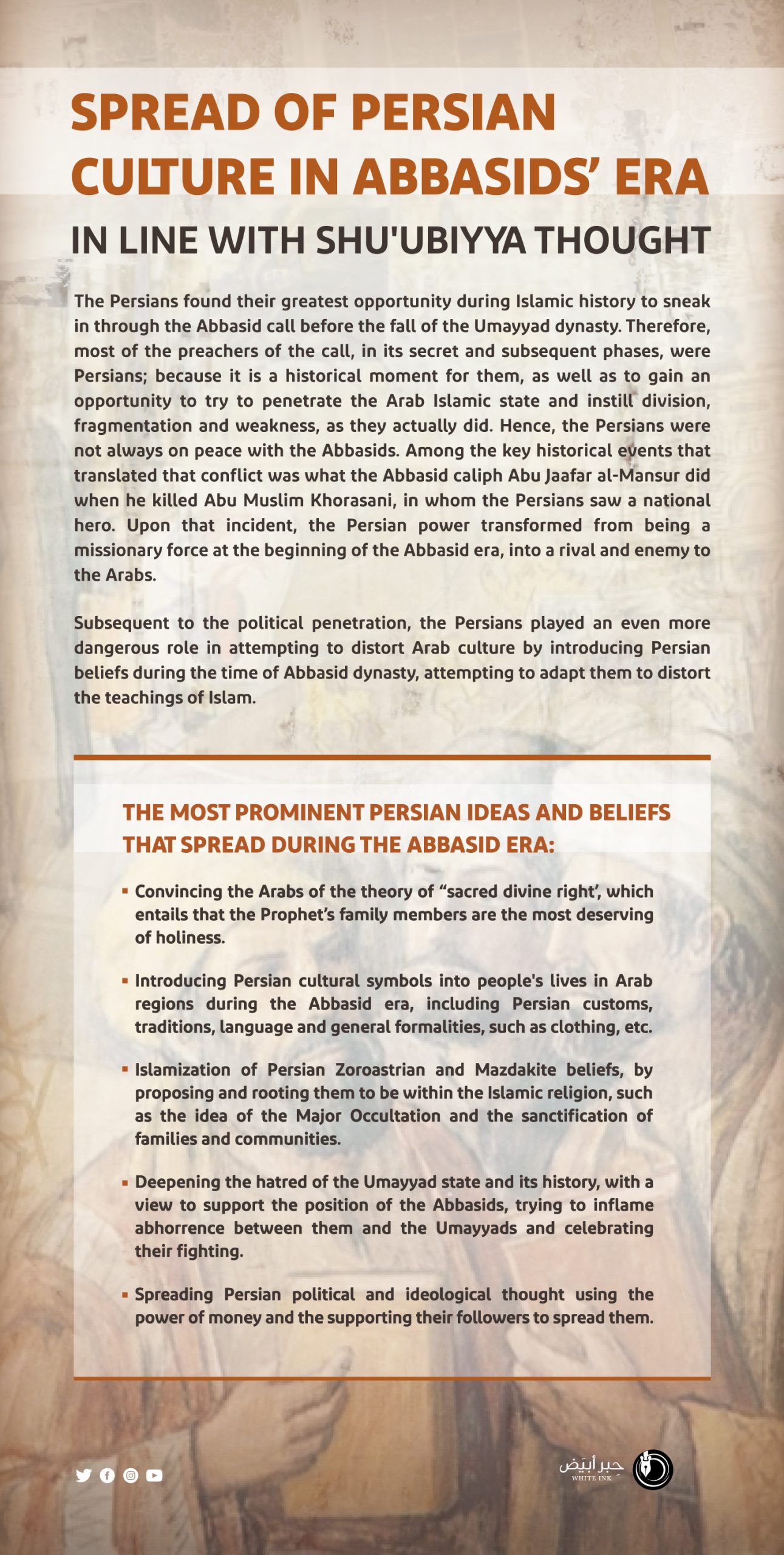
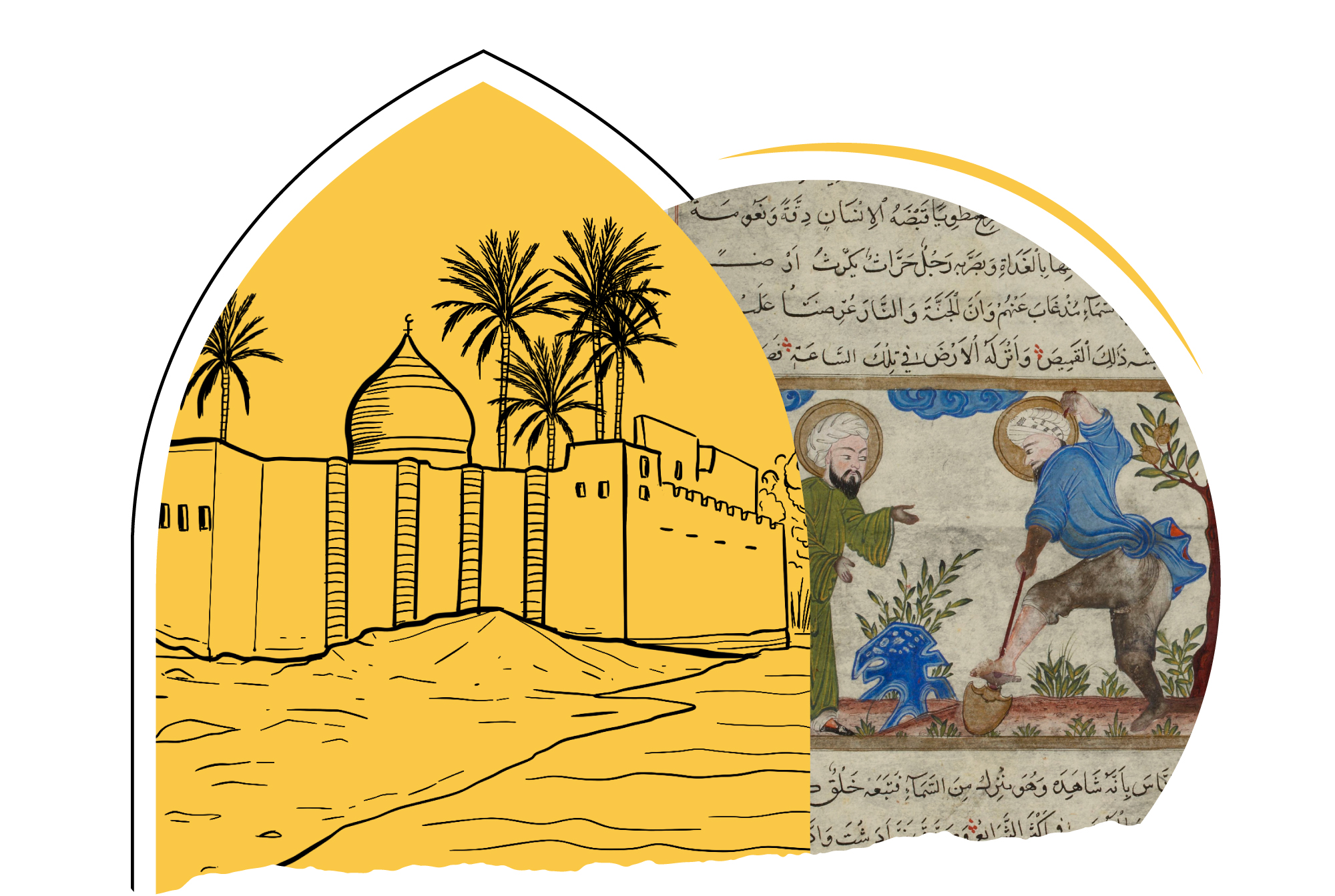
" Behāfarīdism"
Persian religion that arose at the end of the Umayyads and was destroyed at the beginning of the Abbasids
Origin and Formation
The domination of the Persian element and its pervasiveness within the Abbasid state cannot be separated from the tolerance of the Abbasid caliphs themselves in that matter. They found in the Persians helpers and assistants and placed them in the position of the sons of the conquering Arabs, who settled in Iraq, the Levant and other countries that were conquered at the beginning of the Islamic era. That was an Abbasid option dearly paid later on.
There is no convincing reason for the Abbasids to do so as the Arab state, at the outset of Islam and the Umayyads, had passed the first one hundred years of its life and gained a lot of administrative, financial and knowledge experiences. However, the Abbasid caliphs, in most of them, enabled the Persians and their Zoroastrian religious culture to penetrate the body of the state until it fragmented it culturally and conquered it militarily.
From its inception, the Abbasid state welcomed the Persian element in administration and government, opened doors for them and raised their ranks, and the Persians had a wide and active presence in Baghdad, the capital, and left deep influences in various fields.
This influence was not limited to taking the bureaucratic experiences and administrative formations from the Persians, but rather included many professions and functions. After the Abbasid government made Baghdad its capital, Iraq was significantly impacted by various cultural, civilizational, and Persian fields. Iranian arts and professions spread therein, such as writing in Persian, knitting, sewing and taste in the Persian style.
When Iraq became an important center of the Islamic state and Baghdad became the capital of the state, a center for its decision-making and an important rule of governance, many Iranian craftsmen and professionals were allowed to migrate thereto.
Persian presence entered its religion and culture
The presence of the Persians in the Abbasid government had very significant impacts on the Abbasid administration. That was evident after they took over the administrative affairs and expanded the scope of their work in the state. Iranian crafts and professions appeared in Iraq that were not known before. This is most evidenced by the subsequent influence of the Barmakids in Abbasid state.
Researchers Ali Asghar Mirzaei and Abd al-Salam Balawi said in their book, titled The Transfer of Iranian Professions and Industries to Iraq in Abbasid Era: A Study in the Causes and Methods of Transfer, that “The penetration of the Persian element into the Abbasid government since its inception had a great impact as the Persians left a great mark for themselves in the interest of the Abbasid caliphs and their statesmen in Persian culture, up to celebrating Nowruz and Mehregan, which are two of the Persian religious feasts. Celebration of these two feasts continued during the third and fourth centuries after the migration. The Buyids had a prominent influence in Iraqi society, especially with regard to religious ceremonies in their era, as they were keen to show the details of their culture”.
Civilization Alienation
The Persian presence, with the approval of the Abbasids, was overwhelming and it moved from the administration to Persian clothing and textiles. The Abbasids replaced the authentic Arab dress with the Persian one and Persian fashion appeared in the Abbasid court. Pants and vaults were worn, as well as the talisan, which is one of the most famous Persian clothes; a round garment that is placed over the head and hangs over the forehead.
Arab foods were not spared from the entry of the Persian. Persian cuisine spread in the palaces of the state and became the favorite with the change of the Arab taste.
Early Appearance of the Persian Magi
The Umayyad state had just fallen when the fangs of the Magi Persians appeared, those who worked in silence to get out and re-establish their religion and their Sasanian kingdom, which had fallen at the hands of the Arab knights. With the weakness of the Umayyad state and its laxity, and with the emergence of the Abbasid call, the hopes of the Persians came out to the open again. This prompted great hopes in the hearts of the Persian separatists. If they supported the Abbasid call, they would be able to restore their position and their religion, thus some teachings of Magian religions (Zoroastrianism, Manichaeism, and Mazdakism) appeared again in those regions, sometimes dressed in the garment of Islam. In other words, these teachings are developed from those religions after being influenced by some of the teachings of Islam and after the success of the call and the establishment of the state, as well as the declaration of the Abbasids’ adherence to the Islamic religion and their adoption of Quran and Sunnah, not to mention their reliance on Arab elements, at the beginning of the Caliphate. Those Persian elements made rebellious movements against the Abbasids, in an attempt to restore their past glory and end Arab rule in those regions.
Persian Behāfarīd Movement (747-749 AD):
Behāfarīdism movement is the oldest political religious movement that emerged in Khorasan, east of the Abbasid state, at the end of the Umayyad era and during the activity of the Abbasid call there. They continued after the establishment of the Abbasid state. Behāfarīdism was founded by a man called Bahafarid bin Ferdinan, from the village of Rowa in Abershahr. He was a Zoroastrian Magi who tried to spoil some of the teachings of Islam, including that he used to pray the five daily prayers without prostration (sujood) and without facing the qiblah.
A historical narration states that before announcing himself he went to China only to return bringing with him a green, soft, fine-made shirt. Upon reaching his country in Khorasan, he climbed at night to the dome of one of the temples without anyone seeing him. One of the peasants saw him at dawn, then the people gathered around him. He told them that he had come from heaven, where he saw heaven and hell and that Allah had given him that strange shirt that was in heaven. Behāfarīd moved in Nishapur before the announcement of the Abbasid call in Ramadan (129 AH), corresponding to (747 AD).
Behāfarīd claimed prophecy and showed them a book in Persian language that he claimed had been revealed to. He then called for a modified type of Magian Zoroastrianism and claimed to be the successor of Zoroaster, who admitted that he was a prophet, yet he rejected some of the teachings of Zoroastrianism and introduced some basic modifications in Zoroaster’s religion in accordance with the principles of Islam and his teachings. Among his new teachings, as said, that he commanded his companions to quit talking with a low voice while eating, as well as to stop drinking alcohol and eating dead meat, in addition to quitting marrying mothers, daughters, sisters and nieces. These matters are not forbidden in the Zoroastrian teachings, yet he adopted prohibiting them from the teachings of Islam. However, he ordered his followers to prostrate to the eye of the sun on one knee!
The religion that Behāfarīdi al-Farsi brought is a mixture of Islamic and Zoroastrian teachings

Behāfarīd also imposed on his companions seven prayers: The first is for the monotheism of Allah, while Zoroastrianism is a dualistic religion. The second prayer is for creation of the heavens and the earth. The third is for the creation of animals and their means of living. The fourth is for death. The fifth is for resurrection and reckoning. The sixth is for the paradise and hell. The seventh is for glorifying the people of paradise.
Perhaps one of his most important teachings that was later leaked is the resurrection as he called for (the Return “Rajʿa” Doctrine). Perhaps that was his most important principles, signifying that a person does not die, but rather hides somewhere and that if he dies, he will return to this world before the Day of Judgment.
Elimination of the first Persian rebellious movements
Most sources agree that the extremist movement was eliminated during the time of Abu al-Abbas al-Saffah, the first of the Abbasid caliphs. The magi themselves resisted Behāfarīd movement and considered him a dissident. The Moabatha and the Haradha (Magi clerics) met with Abu Muslim in Nishapur and complained to him that Behāfarīd had corrupted the religion of Islam. Abu Muslim sent Shabib bin Dah and Abdullah bin Saeed to ask him to join Islam. He agreed and was declared a master, yet his conversion to Islam was not accepted due to his predictions and he was killed.
His teachings spread in Khorasan, especially after the death of Abu Muslim al-Khurasani, until the fourth century AH / tenth century AD. Perhaps the steadfastness of Behāfarīdism’s followers in their beliefs is partly due to their belief in the inevitability of Behāfarīd’s return, as his followers believe that he ascended to heaven on a horse and that he will return to earth to take revenge on his enemies.


- Hussein Atwan, Abbasid Call: History and Development, 2nd edition (Beirut: Dar Al-Jil, 1995).
- Sayyid Salem, First Abbasid Era (Alexandria: University Youth Foundation, 1993).
- Ali Mirzaei and Abd al-Salam Balawi, Transfer of Iranian Professions and Industries to Iraq in Abbasid Era (Iran: Arak University, n.d).
- Muhammad Al-Khudari, Lectures on the History of Islamic Nations: The Abbasid State, edited by Muhammad Al-Othmani (Beirut: Dar Al-Qalam, 1986).
- Nabila Hassan, History of the Abbasid State (Alexandria: Dar Al-Ma’refa Al-Jamieya, 1993).

Arabs Sovereignty in Umayyad and Abbasid Eras Prompted the Persians to Establish their False National Uniqueness
Conflict is the constant feature in Arab-Persian relations, given that the Persians were of the opinion that the elimination of Arabs is a prelude to the eradication of their culture and erasure of Islamic identity, paving the way to the empowerment of Persian beliefs, especially in their Zoroastrian dimension. Confrontations between the Arabs and the Persians remain one of the manifestations of Persian hostility. The outset of the Abbasid era witnessed confrontations of a special kind, in view of the cautious coexistence between the Arabs, who have power and authority, and the Persians, who are submissive for fear of the Arab hegemony.
In this context, and given the weak Persian state, they resorted to adopting new tactics in confronting the Arabs; tactics that have continued to this day, know in the literature of military confrontations as “Proxy War”. Here, it appears that current Iran did not invent the industry of military arms and mercenaries. It is rather a Persian tactic inherited since the first Abbasid era, when the Persians bet on ” Shu’ubiyya” to strike the Arabs and blow up the Arab-Islamic state from its center of gravity.
In connection with the historical context, some historians see that Shu’ubiyya is “anti-Arabs civilized cultural movement. Iraq was the stage on which it appeared… because it was the meeting place of the dominant Arab element with the defeated Persian element.. It remained hidden throughout the Umayyad era, until the Abbasids succeeded in establishing their state. They used the loyalists and put them in important positions… Nationalism then dominant the Shu’ubiyya, thus strengthened it, escalating its danger, as it turned into something like organizations supervised, planned, maintained and assisted by prime ministers, authors writers and poets from Persian loyalists”.
It can be said that the supremacy of Arab race in the Umayyad and Abbasid eras prompted the other “peoples” to try to prove themselves and show their national uniqueness by announcing their rejection of everything that is Arab. Thus, “The children of other peoples tried to prove to the Arabs their identities and existence, showing them that they are not better than all other nations”.
At this point, it is worth noting that Arab Muslims, being the first carriers of Islam to others, would not have triumphed favor the race, as the criterion for distinction, success and advancement in Islam is not race, language or color, but piety and adherence to the assets established in the religious text. Therefore, it is likely that the prevalence of ethnic passion made the Persians and Shu’ubis interpret that dimension among the Muslims, who wanted to melt all ethnicities in the crucible of Islam, which came to cut off all roots of division, especially ethnic, tribal and factional divisions.
Historical fidelity and integrity in receiving and transmitting necessitate pointing out that Shu’ubiyya spread among non-Persian races, including “Nabateans, Copts, Andalusians, Zats from the people of Sindh and Negroes from the people of Africa. All agreed on Shu’ubiyya despite their different origins, races, and boasts (over the Arabs) and their supremacy thereover and their hostility thereto. However, the prevalence of Shu’ubiyya among other nations does not diminish the great role played by Persian loyalists therein. They are the origin of the ailment and the source of affliction”.
Shu'ubiyya spread among a group of non-Persian races, yet Persians remained the owners of control, linkage and guidance.

Perhaps the most dangerous matter that distinguishes “Shu’ubiyya” and what made the Persians adopt its tactics to date (the movement of the Deprived “Al-Mahromeen” and others) is its riding on social demands, thus transforming into a political movement that aimed at overthrowing the political authority. It is the strategy adopted by political Islam organizations, whether they are affiliated with the Sunnis or Shiites. In order to disentangle this point, the Shiite theorist Ali Shariati says: “At the beginning of its emergence, Shu’ubiyya carried the (equality) slogan; i.e., equality of non-Arabs with the Arabs. However, after a while, the slogan gradually transformed from an (equality) movement to a movement of preference, calling for preferring the non-Arabs to the Arabs. It worked by promoting nationalist sentiments and spreading despair from Islam, with a view to strike at the authority of the caliphate”.
The study of Shu’ubiyya is an essential entry point for understanding the mutations known to social demands when their starting points are racist. Here, the incident race relies on adopting the front of defending social demands and calling for freedom, equality and the other rights, by expanding the material base, thus working to poison the masses and push them to overthrow the political power.
Shu’ubiyya’s claim of injustice and unfairness are justifications that prompted its owners to declare hostility to the Arabs; an hostility that is not supported by historical evidence, as it is evident that Shu’ubis enjoyed absolute equality in the Abbasid state era. They occupied the most important political and economic positions even in the Abbasid court. However, this new reality did not overcome their hatred against the Arabs, but rather, “their mob, leaders and senior and political figures became acquainted and familiar with each other and their national feeling grew greatly until its evil exacerbated, resulting in increasing their hostility and intensifying their opposition to the Arbs, until they began to speak out loudly”.
The difference of Shu’ubiyya tendencies and the difference in their origins and demands did not prevent their agreeing on a single goal; that hostility to everything that is Arab, even if it leads to a coup against a sultan who fed them from hunger and secured them from fear.


- Bu Melhem Ali, Philosophical Approaches of Al-Jahiz, 2nd edition (Beirut: Printing and Publishing House, 1988).
- Hussein Atwan, Heresy and Shu’ubiyya in the First Abbasid Era (Beirut: Dar Al-Jil, 1984).
- Hussein Atwan, Abbasid Call, History and Development, 2nd edition (Beirut: Dar Al-Jil, 1995).
- Ali Shariati, Alawi Shiism and Safavid Shiism (Beirut: Dar Al-Amir for Culture and Science, 2002).
- Sayyid Salem, First Abbasid Era (Alexandria: University Youth Foundation, 1993).


